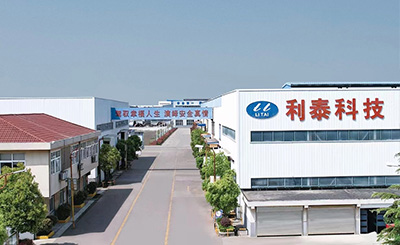Several tips for major repair of anti-corrosion coatings on molded PTFE pipelines
Different temperatures, pressures, and media can have a significant impact on the service life of PTFE pipelines. Sometimes, the anti-corrosion coating of PTFE pipelines may age prematurely. In this case, in order to ensure pipeline safety and extend service life, major repairs can be carried out on the anti-corrosion coating of PTFE pipelines. Today, Ruineng will introduce several techniques during the overhaul process.
1. In general, mechanical and manual excavation is used for civil engineering excavation, which can improve work efficiency and construction safety. However, it should be noted that in areas with soft soil and deep pipelines, excavation must be carried out above the pipelines. When manually cleaning the bottom of the ditch, two or more people must be present, and personnel should not stand on one side during work, People are strictly prohibited from standing on the soil edges on both sides of the construction. People are strictly prohibited from standing on the soil edges on both sides of the construction. People are strictly prohibited from standing on the soil edges on both sides of the construction.
2. During the pipeline cleaning process, the most common situation is that the outer anti-corrosion layer is peeled off, and there is a thin and sticky asphalt layer on the surface of the pipeline. The best method is to use a diesel cloth to soak the part to be removed with diesel, and after 2-3 hours, it can be easily removed with a small shovel. If there is a lot of sand in the area, a cloth dipped in fine sand can be used for cleaning. In this way, not only does it save sand cloth and oil, but it also cleans up the pipeline. Through the above methods, the cleaning process is fast and saves raw materials.
3. Apply primer and wrap, and use the difference between primer application, drying time, and wrapping time when the wind is relatively low to carry out the work. For example, in a 16 meter long pipeline, two people use a cloth for final cleaning, followed by two people brushing the primer. After brushing for 2 meters, wrap the personnel down the trench and install the machine. The optimal time for the primer to air dry is about 5 minutes, at which point the mechanical installation can be wrapped. Under normal circumstances, the speed of primer application is 1.0 meters per minute and the winding speed is 0.7-0.8 meters per minute. In addition, appropriate training should be provided to winding personnel, and regular maintenance and upkeep of winding machines should be carried out.
4. Electric spark testing, during the process of electric spark testing, should focus on the connection between the completed section of the pipeline and the new winding section. Because this section has already been partially backfilled after completion and its adjacent sections have been excavated, excavators may inadvertently cause damage to the exposed parts while cleaning the pipe trench. It is recommended to focus on the connection between the completed section of the pipeline and the new winding section during electric spark testing to reduce the rework rate.
5. Backfilling is the final construction stage of the project, often overlooked but also the most critical step. The general method of using grass curtains to cover pipelines is to reduce the damage caused by small sand and stones. Although this method is effective, the tensile strength of grass curtains is too low, which directly leads to an increase in cost. The method of overlapping synthetic fiber carpets can be used, which is effective and reduces costs.
As an important type of anti-corrosion equipment, PTFE pipes have played an important role in industries such as chemical, pharmaceutical, steel, food, beverage, textile printing and dyeing. In order to ensure the normal use of PTFE pipelines, customers need to regularly inspect their anti-corrosion coatings. If major repairs are found, the above techniques are very practical!

















